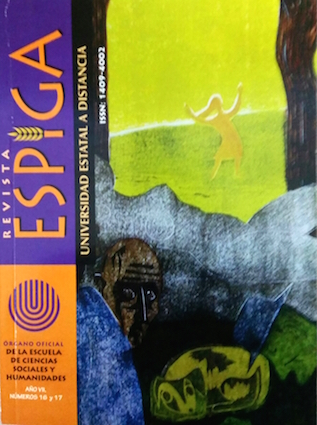The Use of Technology in Distance Language Learning
DOI:
https://doi.org/10.22458/re.v8i16.1536Palabras clave:
Distance language learning, technology, authentic materials, language acquisition, computer-mediated communicationResumen
Distance language learning is a real challenge to both teachers and learners, since the students’ exposure to the target language in a distance learning system is not as authentic and interactive as required. Additionally, it also entails a significant reduction in the amount of students’ interaction and in the support from both the teacher and other learners, which has a negative impact on students’ levels of motivation and achievement. In the hope of enhancing the distance teaching-learning process of a language and compensating for the previously mentioned drawbacks, a number of technological tools are currently being implemented. However, these technologies have also brought about new challenges that need to be addressed by policy makers, materials developers, teachers and students, if they are to be successfully implemented.
Citas
Kingdom: a cross-cultural perspective.” Open Learning: The Journal of Open and Distance Learning, 21:3, 205-219.
JONES, J. 2001. “CALL and the responsibilities of teachers and administrators.” ELT Journal 55 (4) 360-367.
LI, R. and R. S. Hart. 2002. What can the World Wide Web offer ESL teachers? In J. C. Richards and W. Renandya (Eds.) Methodology in
Language Teaching. An Anthology of Current Practice. Cambridge: Cambridge University Press.
MURRAY, D. 2000. “Protean communication: The language of computer-mediated communication.” TESOL Quarterly. 34:3, 397-421.
POON, A. 2003. “A Challenge for the developer: issues of interactivity and linguistic- cognitive appropriateness in English language learning.” Open Learning: The Journal of Open and Distance Learning, 18:2, 135-153.
ROGERSON-REVELL, P. 2007. “Directions in elearning tools and technologies and their relevance to online distance language education.” Open Learning: The Journal of Open and Distance Learning, 22:1, 57-74.
SOKOLIK, M. 2001. Computers in Language Teaching. In Marianne
CELCE-MURCIA(ed.) Teaching English as a Second Language. Third Edition. Boston, MA: Heinle and Heinle Thompson Learning.
STEMPLESKI, S. 2002. Video in the ELT classroom: The role of the teacher. In J. C. Richards and W. Renandya (Eds.) Methodology in LanguageTeaching. An Anthology of Current Practice. Cambridge: Cambridge University Press.
WARSCHAUER, M. 1996. Computer-assisted language learning: an introduction. In S. Fotos (Ed.), Multimedia Language Teaching. Tokyo: Logos International.
WARSCHAUER, M., H. Shetzer and C.Meloni. 2000. Internet for EnglishTeaching. Alexandria, VA: Teachers of English to Speakers of Other Languages, Inc.
WARSCHAUER, M. 2000. “The changing global economy and the future of English teaching.” TESOL Quarterly.34:3, 511-535.
WARSCHAUER, M. and P. Fawn Whittaker. 2002. The Internet for English teaching. In J. C. Richards and W. Renandya (Eds.) Methodology inLanguage Teaching. An Anthology of Current Practice. Cambridge: Cambridge University Press.White, C. 2003. Language Learning in Distance Education.Cambridge: Cambridge University Press.
ZIRGER, B.J.; J. Evans; M. Levy. “Effective use of video streaming for support of traditional and distance learning courses.” Last retrieved 25th October, 2007 from www.oln.org/conferences/OLN2003/papers/ZirgerOLN03.pdf.
Descargas
Publicado
Cómo citar
Número
Sección
Licencia
Los artículos publicados por esta revista operan bajo licencia de CREATIVE COMMONS (Atribución-NoComercial-CompartirIgual 4.0). El Comité Editorial permite la reproducción parcial o total de los artículos a condición de que se mencione la fuente. Asimismo, los escritos podrán ser colgados y divulgados vía digital, siempre y cuando se mantenga la fuente de su publicación.
